Expanding the Circle of Assistance
Treatment for Female A-bomb Survivors
Keloid scars are both physically and emotionally painful. Young women were especially vulnerable because keloids on the face or legs were an obstacle to love and marriage. Many scarred women were plunged into despair by the looks and words they were subjected to by people around them. While bearing this emotional pain, many valiantly sought a path toward independence through contact with others who shared their condition.
In 1952, author Shizue Masugi and the members of the Japan PEN Club learned of the plight of these women and arranged for some of them to receive treatment in Tokyo. This news spread rapidly through Japan, and a group in Osaka offered help to more women. Eventually, members of the board of Hiroshima Peace Center Associates in USA got wind of this movement and made arrangements for some of the women to travel to the US for treatment.
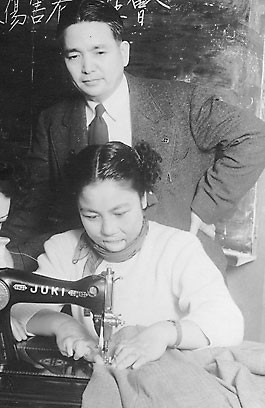 59 Aiming for self-reliance Courtesy of Chisa Tanimoto Women who suffered from keloids caused by the A-bomb struggled with discrimination in employment and marriage. Pastor Kiyoshi Tanimoto of the Hiroshima Nagarekawa Church formed a group that offered psychological support to these women. The Hiroshima Peace Center Foundation also helped survivors become independent by offering jobs in such facilities as the Women's Home and schools for blind children. |
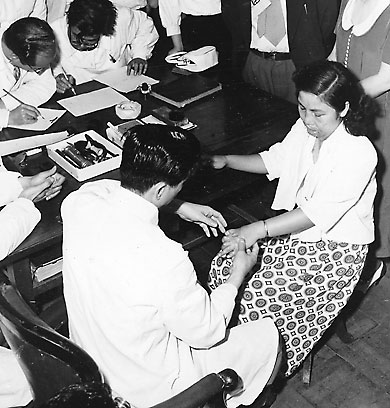 60 Medical exams in Tokyo June 1952 Koishikawa branch of the University of Tokyo Hospital Courtesy of Chisa Tanimoto Pastor Tanimoto thought that women suffering keloids could be cured by surgery. With the assistance of Shizue Masugi, an author who had interviewed the women, nine female A-bomb survivors went to Tokyo in June 1952 where they underwent treatment at the Koishikawa branch of the University of Tokyo Hospital. |
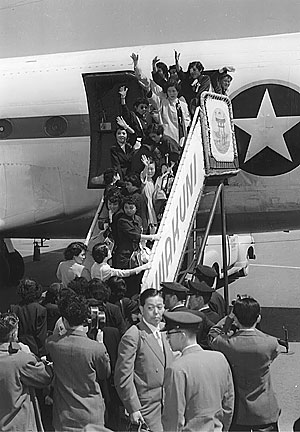 61 Leaving for the United States May 5, 1955 Iwakuni Airport Courtesy of Chugoku Shimbun The 25 women left for the United States from Iwakuni Airport on May 5, 1955, in an airplane of the U.S. Air Force. |
 62 Presentation of female A-bomb survivors to receive treatment in the United States April 15, 1955 Hiroshima City Hospital Courtesy of Chugoku Shimbun From April 12 to 14, 1955, 43 women were examined by American doctors in charge of treatment at the Hiroshima City Hospital. From these women, in their teens to their 30's, 25 women were selected to receive treatment in the United States. | |
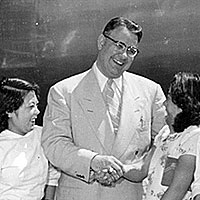 63 Marvin Green talks to female A-bomb survivors June 1952 Courtesy of Chisa Tanimoto Marvin Green, a director of the Hiroshima Peace CenterAssociates in USA, came to Japan to observe the Moral Adoption Program and other A-bomb support activities in the country, and while in Tokyo he talked with female A-bomb survivors. He reported the women's condition to the other directors, and suggested bringing the women to the United States for treatment. |
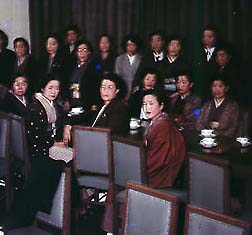 64 Treatment in Osaka 1953 Courtesy of Chisa Tanimoto Support activities spread to Osaka when the Osaka Municipal Medical College and Osaka University Hospital performed medical exams on 12 female A-bomb survivors in December 1952. In February of the next year, the Hiroshima Peace Center Associates in Osaka was established in order to provide systematic support for A-bomb survivors. |
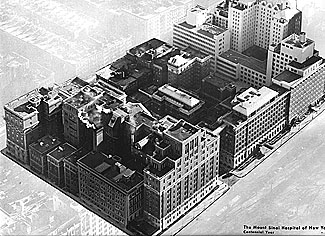 65 Mount Sinai Hospital Courtesy of Mount Sinai Archives The women were admitted to Mount Sinai Hospital in New York for treatment. The costs of the surgery and hospital stay were completely waived for the treatment the women received from Dr. Arthur J. Barsky and the plastic surgery staff of the hospital. |
 66 Keloid treatment at the hospital Courtesy of Ai Yokoyama The women were alternately admitted to the hospital in small groups. They received plastic surgery to remove the keloids from their face and body with a single woman undergoing many surgeries, sometimes over 100 times. |
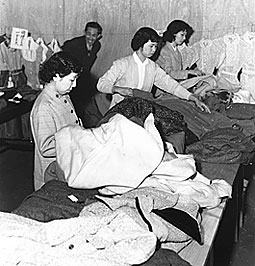 67 Delivery of clothing April 28, 1956 Courtesy of Chugoku Shimbun While in the United States, the women appeared on local television shows providing them the opportunity to publicize the plight of the A-bomb survivors. This caused a great stir among the public and resulted in a great deal of fund raising with money and clothing also being sent to the Hiroshima women who required treatment. |
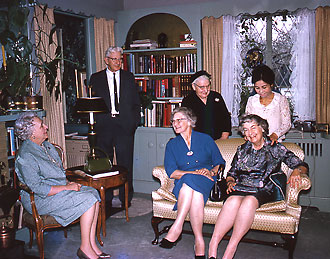 68 Warm family homes Courtesy of Chisa Tanimoto When not in the hospital, the New York Friends Center made arrangements for women to stay in pairs at the homes of regular American families. Parties were held in the communities where the women stayed, allowing them an opportunity to meet and mingle with the residents. These homestays were wonderful positive experience. |
 69 Sent off by a huge crowd June 1956 Courtesy of Chisa Tanimoto Nearly a year after their treatment ended, the first group of women left to return to Japan in June 1956 with the second group following in November. With their eyes on the future, the women had studied at schools in the areas they were staying, with some women staying behind to continue their studies. |
